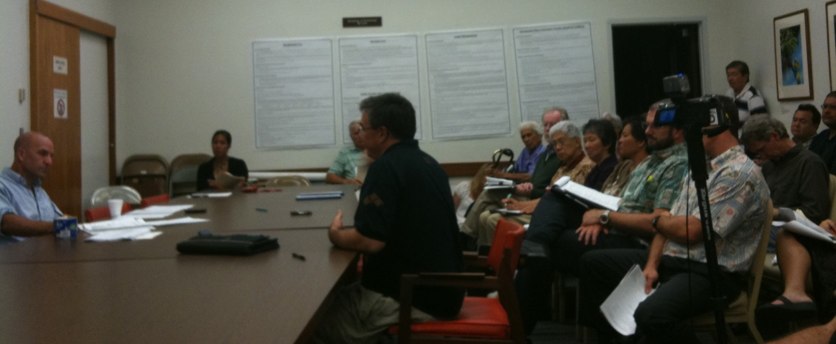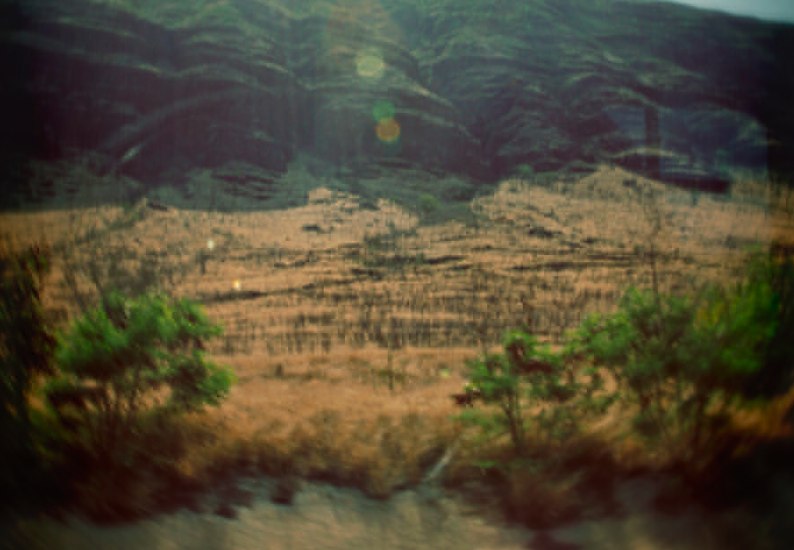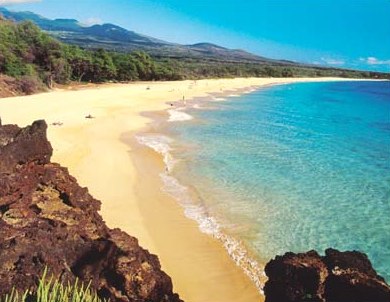Blog
News, updates, finds, stories, and tidbits from staff and community members at KAHEA. Got something to share? Email us at: kahea-alliance@hawaii.rr.com.
Reading: Environment Hawai'i, August Issue
We got our August issue of the excellent Environment Hawai’i in the mail the other day!
On DAR’s proposed list of activities that they believe should be exempted from doing environmental assessment, they write, “DAR’s proposed list appears to exempt every type of permit and license issued by the division.” Including live rock and coral collecting permits and all permits for Papahanaumokuakea in the Northwestern Hawaiian Islands.
There is also great coverage of Waimanalo Gulch violations and wet-noodle enforcement from the Department of Health, and excellent reporting on this summer’s WESPAC meetings.
Mahalo to Pat and Teresa for their excellent investigative reporting! You can support Environment Hawai’i by subscribing today!
Laughable public process: changes to conservation protections

Hearings officer Sam Lemmo, the administrator for OCCL, made a point of assuring the room that the final regulations would definitely be different from what we are seeing tonight based on all of the great input they had been getting. (Did you just feel that gentle pat on the top of your head? I did.)
We pressed Sam on when we might actually see the final regulations. Generally speaking, the agenda for the Board of Land and Natural Resources is posted a mere six-days before the Board decides an issue. Will we only get six days to review the final version of the rules that are supposed to be protecting our conservation lands for at least the next 15 years?
In response, Sam chuckled and said “good question.” The audience laughed. I laughed, too — because what do you do when someone laughs in your face? Despite all the laughter it was a sad moment.
It is sad when regulations as important as these are given but the bare minimum of study and public process. We are talking about 2 million acres of conservation lands — our watersheds, nearshore waters… the important places. Conservation lands are 51% of the crown and government lands that are supposed to be held in the “ceded” lands trust for Native Hawaiians and the people of Hawaii — we have an obligation to protect these assets.
From what I hear from the old-timers, when these rules were changed 15 years ago, there was a public blue ribbon panel convened to advise the division on improving the regulations. Today, DLNR is unilaterally proposing major revisions. What gives? Where is the expert panel? The thoughtful study? The reasoned assessment?
In response to my quote on the need for “a blue ribbon panel” in the Star-Advertiser on Thursday, several insiders came forward at the hearing to thank Sam for DLNR’s history of work on these rule changes that were, in their words, “a long-time coming.” So long in coming, in fact, that the public just heard about them. These rules saw the first light of day in July and are expected to be approved before December. Coincidentally, that’s right before the Lingle Administration leaves office. Feels more like a 50-yard dash than a “long-time coming” to me.
Both in and out of public hearings, we have heard Sam say, at least 20 times (no exaggeration, I seriously counted), “Good question, that wasn’t what I intended” in response to questions and concerns about the staff’s proposed changes. I don’t know about you guys, but if what I write down isn’t what I meant to say, its usually because I was in a rush and didn’t take the time to think about the implications… welll… that kind of pondering is exactly what we need right now.
Good changes, bad changes, the bottom line is these changes need more thought. We should not let the timeline for the end of an administration drive the schedule for amending some of the most important protections in our islands.
Want to feel like you were there? Here is a link to notes from the Honolulu public hearing on August 12, 2010.
Want to participate in the process? Sign up for KAHEA’s action alert network, later this week we’ll send out an easy-to-use comment form by email.
Signs of Aloha Aina
From Marti:
We had our first sign-making party in the “Keep Waianae Country” effort. We are getting ready for the Land Use Commission to visit the parcel of farmland that Tropic Land proposes to turn into an industrial park. Their visit happens on Wednesday August 18th at 1:30 pm.
Want to join us? We’ll be on Farrington Highway where it intersects with Lualualei Naval Access Road and with Hakimo Road at 1:00 pm.
Can’t make it, but still want to participate? Then make a sign in support of keeping Waianae country, take pictures of you and your friends holding the sign, and then send the pictures to us at miwa(at)kahea.org. We’ll make sure the LUC sees it.
And if you live along the navy road or Hakimo road, then hang a sign on your fence where everybody can see it. We’ll be passing out the beautiful signs we made next week. Let us know if you want one.
Big Mahalo to everyone who came out to help us make signs. It was a lot of fun. And who knew Tyler would turn out to be poster-painter extraordinare… in addition to top ace legal intern?! Finger painting ain’t just for kids anymore!
Super Intervenors: An Update

(Mahalo to the talented Mark Fiesta for the picture)
The latest scoops from legal intern Tyler on legal proceedings around the push to protect agricultural and preservation lands in Waianae currently threatened with industrialization. Fenceline to farms and homes, an industral park and new landfill are proposed on this area in the middle of one of Hawai’i's largest communities of Native Hawaiians. It’s a justice thing, and it’s a kākou thing!
From Tyler:
We last left you with some tremendous victories following the Land Use Commission’s granting our Motion to Intervene. This means, as you may remember, that we get to sit at the big kids table and play hardball. As dates are solidified and we proceed, our first act as official Intervenors is to order fancy name plates for our desks that say “Intevenor” on them. That was a joke. They say “Super Intervenor.”

All jokes aside, our first OFFICIAL act was to submit a Statement of Position. It’s essentially a formality that lets everyone at the big kids table know what we’re playing for. Environmental and cultural justice. Here’s what we believe to be true:
Tropic’s proposed development ignores:
1) The cultural significance of Wai‘anae
2) The Wai‘anae Sustainable Communities Plan
3) The characterization of Urban land
Think of this as a game of Monopoly. Tropic Lands owns a parcel not on the game board. Let’s call it Insensitive Avenue. They really want to be in the game, because they believe they can make a nice chunk of change. But they can ONLY do this on Insensitive Avenue. So what do they do? They cry “JOBS!” and then they ask the state Land Use Commission (LUC) if they can amend the rules and put Insensitive Avenue on the game board.
The problem is: If we let Insensitive Avenue on the game board, then we MUST put Greedy Place and The Capitalism Railroad into play. And in fact, this is the purpose of the rules. The reason Community Plans and Zoning Regulations are made? To prevent unruly development in a community and to maintain balance. Not to mention mediating ongoing insensitivity to cultural concerns.
We understand the need for economic development. We understand the need for jobs in Wai‘anae.
In actuality, all we’re asking is that you put your industrial park in an area that is compatible with your development plans. Like… Maybe put the industrial park in an already industrialized area? That seems fairly logical to me! How about you folks reading this?
This area is Preservation/Agriculture Land. Let’s keep it that way. There are some incredible alternatives being proposed by communities members–everything from a gateway park to an agricultural incubator.
Now that the big kids know what we’re playing for and why, we gotta show them what we’re playing with. The Scottish Terrier. Or the thimble! Joke. In fact, we’re playing with people who are experts in their fields, and we believe their expert testimonies will expose to the Commission some undeniable truths behind this bad proposal.
Stay tuned!
Collaborate Much?

We’re liking this thought-proving post from journalist Anne Minard, on the “next great telescope race”–Day 14 of her “100 Days of Science.” She asks some great questions about the fundamental purpose of the two U.S. proposals for “next generation” giant land-based telescopes being proposed for construction within the next 10 years. Do we really need THIS much telescope, guys?
Charles Alcock, director of the Harvard-Smithsonian Center for Astrophysics, acknowledged that the two telescopes are headed toward redundancy. The main differences, he said, are in the engineering.
He said the next generation of telescopes is crucial for forward progress in 21st Century astronomy.
“The goal is to start discovering and characterizing planets that might harbor life,” he said. “It’s very clear that we’re going to need the next generation of telescopes to do that.”
And far from being a competition, the real race is to contribute to science, said Charles Blue, a TMT spokesman.
“All next generation observatories would really like to be up and running as soon as possible to meet the scientific demand,” he said.
But when I asked him why the United States teams haven’t pooled their expertise to build a single next-generation telescope, Blue declined to comment.
In all, there are actually three teams (two from the U.S., and one from Europe) racing to build the first of these giant land-based telescopes: Extremely Large Telescope (Europe), TMT (U.S.), and Giant Magellan Telescope (U.S.). (And no, we’re not making these names up… in almost every description we could find, these bad boys are characterized first and foremost by their massive size.) The total estimated price tag for all this summit development? $2.6 billion dollars.
In the midst of this competition to build the first and the largest, the worldwide community of those who share aloha for sacred summits are humbly asking: for time and real consideration for native ecosystems, threatened endemic species, the cultural meaning of sacred space, cultural practice, and the natural and cultural heritage we have to pass forward to next generations… all in short supply on earth today. Can we not rationally slow down this latest race for space, in the interest of the future of life on our own planet?
Exemptions Gone Wild
Generally, under today’s environmental laws, certain kinds of projects have to do an environmental review (Like an EIS). Other kinds of projects can be exempted. The BP oil spill at Deepwater Horizon has been a sobering reminder of why these kinds of environmental reviews and exemptions are so critical. (Can you believe THIS was exempted from EIS?)

Today, DLNR is proposing a “wild laundry list” of EIS exemptions for DLNR-managed lands, from building new roads to chemical herbicides. That’s 57 pages (fifty-seven!) of exemptions. Yeesh. We are asking the Office of Environmental Quality and Control (OEQC) to send DLNR back to the drawing board. If you or your organization is interested in participating in a group letter to OEQC or just want to know more about this issue, please contact Marti at marti@kahea.org by Friday morning.

Mauna Kea Update: Appeal before the ICA
From Marti:
Yesterday, the Mauna Kea hui (Mauna Kea Anaina Hou, Royal Order of Kamehameha I, Sierra Club, KAHEA, and Clarence Kukauakahi Ching) filed the opening brief in our appeal to the Intermediate Court of Appeals challenging the Comprehensive Management Plan (CMP) for Mauna Kea. The Circuit Court had denied our case on the theory that the CMP didn’t actually do anything to affect the summit.
If the CMP doesn’t do anything to affect the summit, then how can the University of Hawaii proceed with its proposal to build the Thirty Meter Telescope? Answer: they can’t.
The University of Hawaii — the sole creator, proponent and implementer of the CMP — simply can’t have it both ways. Either the CMP meets the legal requirements for construction in a conservation district and therefore does “something”… a “something” for which rightholders like the Mauna Kea hui can ask a court review. OR… the CMP doesn’t actually do anything, and therefore doesn’t meet the pre-requisite that a conservation district have comprehensive management before anything is built there … thus prohibiting the construction of a new massive telescope.
Here is the introduction to the hui’s opening brief:
This case is about the Board of Land and Natural Resources’ (“BLNR”) preferential treatment of the University of Hawai‘i’s astronomy program and its complete disregard for the protected rights of Native Hawaiian and other users of the summit of Mauna Kea. On its face, the University of Hawai‘i’s Mauna Kea Comprehensive Management Plan (“CMP”) purports to broadly and actively regulate all uses of the Conservation District of Mauna Kea’s summit, including the religious, cultural, and recreational activities of the Mauna Kea Appellants. But the BLNR chose to completely ignore the CMP’s impact on Mauna Kea Appellants’ rights, duties and privileges. Contrary to its obligations under Hawai‘i Revised Statutes (“HRS”) Chapter 91 and Department of Land and Natural Resources (“DLNR”) regulations, (Hawai‘i Administration Rules (“H.A.R.”) §§ 13-1-28 – 13-1-40), the BLNR issued its final decision to approve the CMP without holding a full and formal contested case proceeding. Record on Appeal, 2009 (“ROA-2009″) at 20-27.
The Mauna Kea Appellants appealed the BLNR’s final decisions to the Third Circuit Court of Hawai‘i (“Circuit Court”). ROA-2009 at 1-15. Appellees BLNR and the UH entities refused to transmit the administrative record to the Circuit Court and instead filed a Motion to Dismiss the appeal. ROA-2009 at 254-265, 268-282. Incredibly, the Circuit Court determined, without ever reviewing the CMP or the rest of the administrative record, that the CMP was a harmless “unimplemented” document and dismissed the appeal for lack of jurisdiction. ROA-2009 at 369-372; Record on Appeal, 2010 (“ROA-2010″) at 1-9.
The Mauna Kea Appellants respectfully request that this Court reverse the Circuit Court’s order and remand this case to the Circuit Court: (1) with a finding that the Circuit Court has jurisdiction, under HRS § 91-14 and/or H.A.R. § 13-5-3 to review Appellants’ appeal from the BLNR’s final decisions; or, alternatively, (2) with a finding that the Circuit Court misapplied the standard of review for a motion to dismiss for lack of subject matter jurisdiction, particularly where the issue of subject matter jurisdiction is intertwined with the merits of the Appellants’ appeal.
In other words, please give the Mauna Kea hui its day in court. Here is a link to the full opening brief.
Big mahalo to our attorneys, Colin Yost and Elizabeth Dunne, for working so hard on our behalf.















